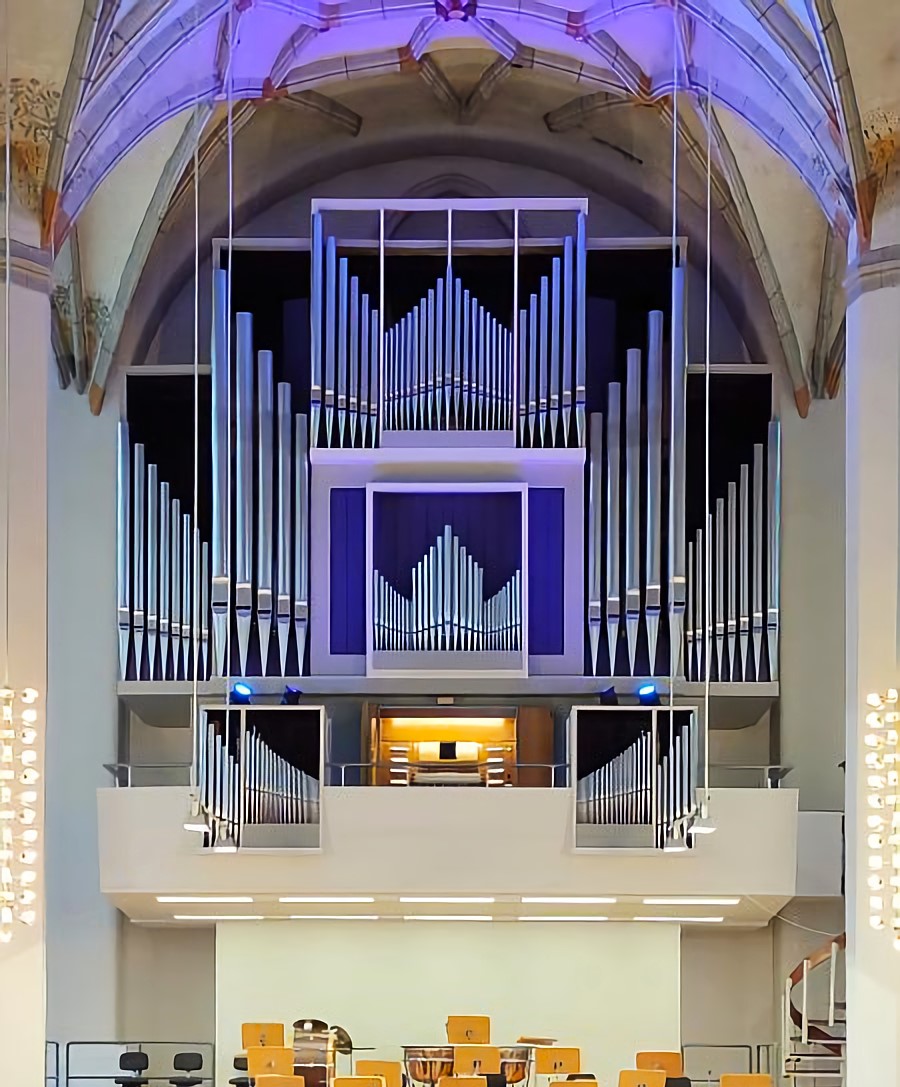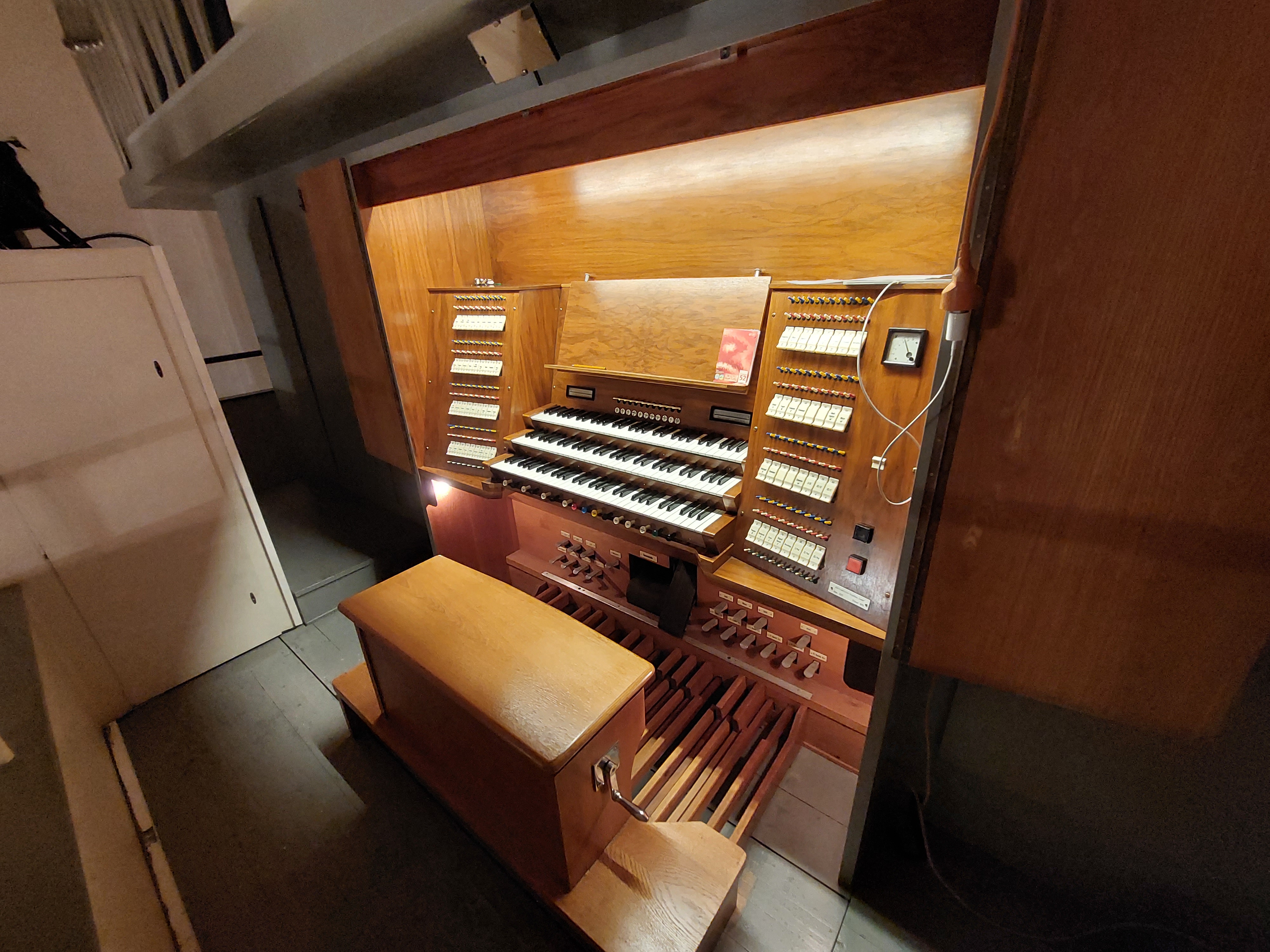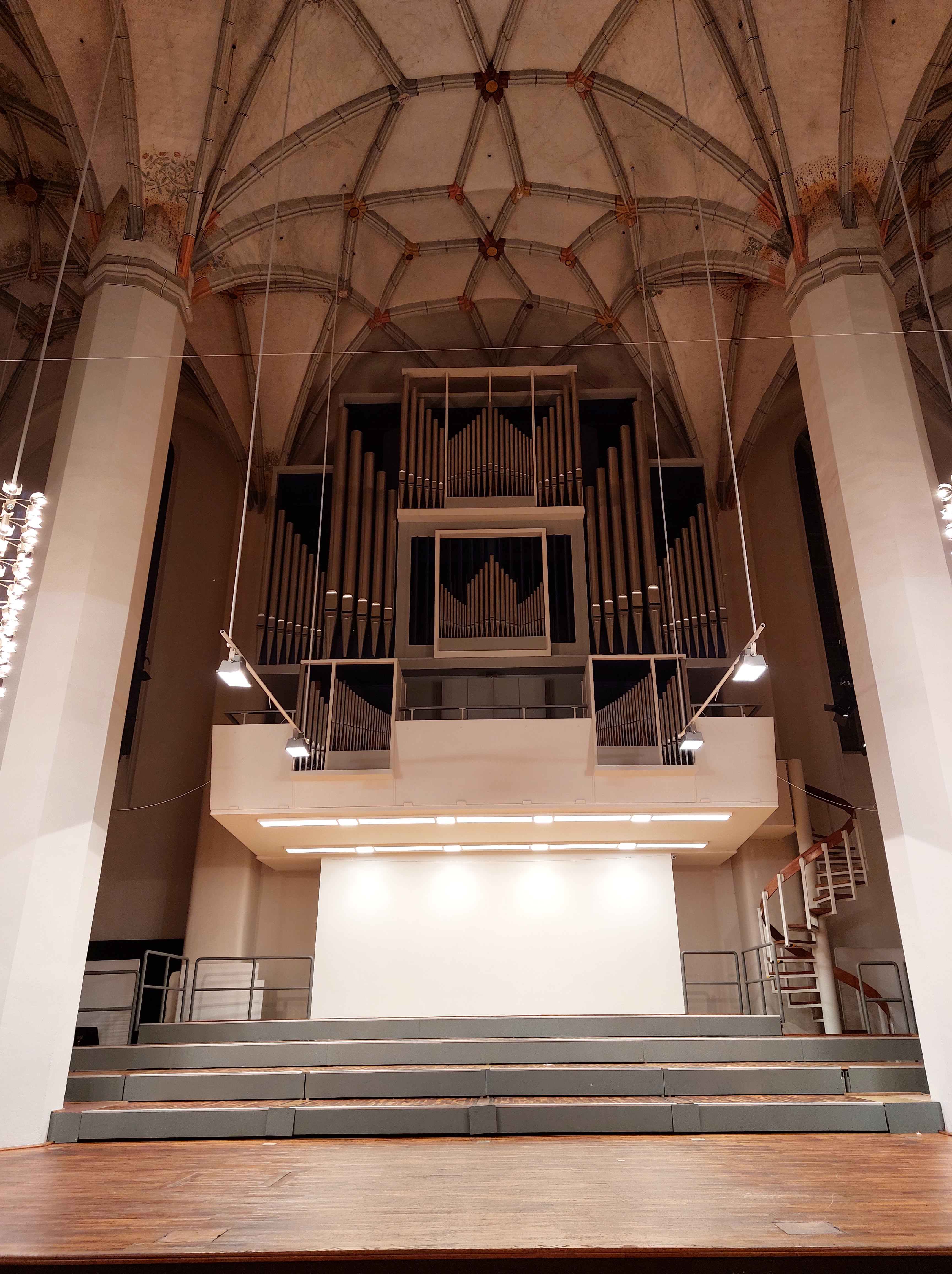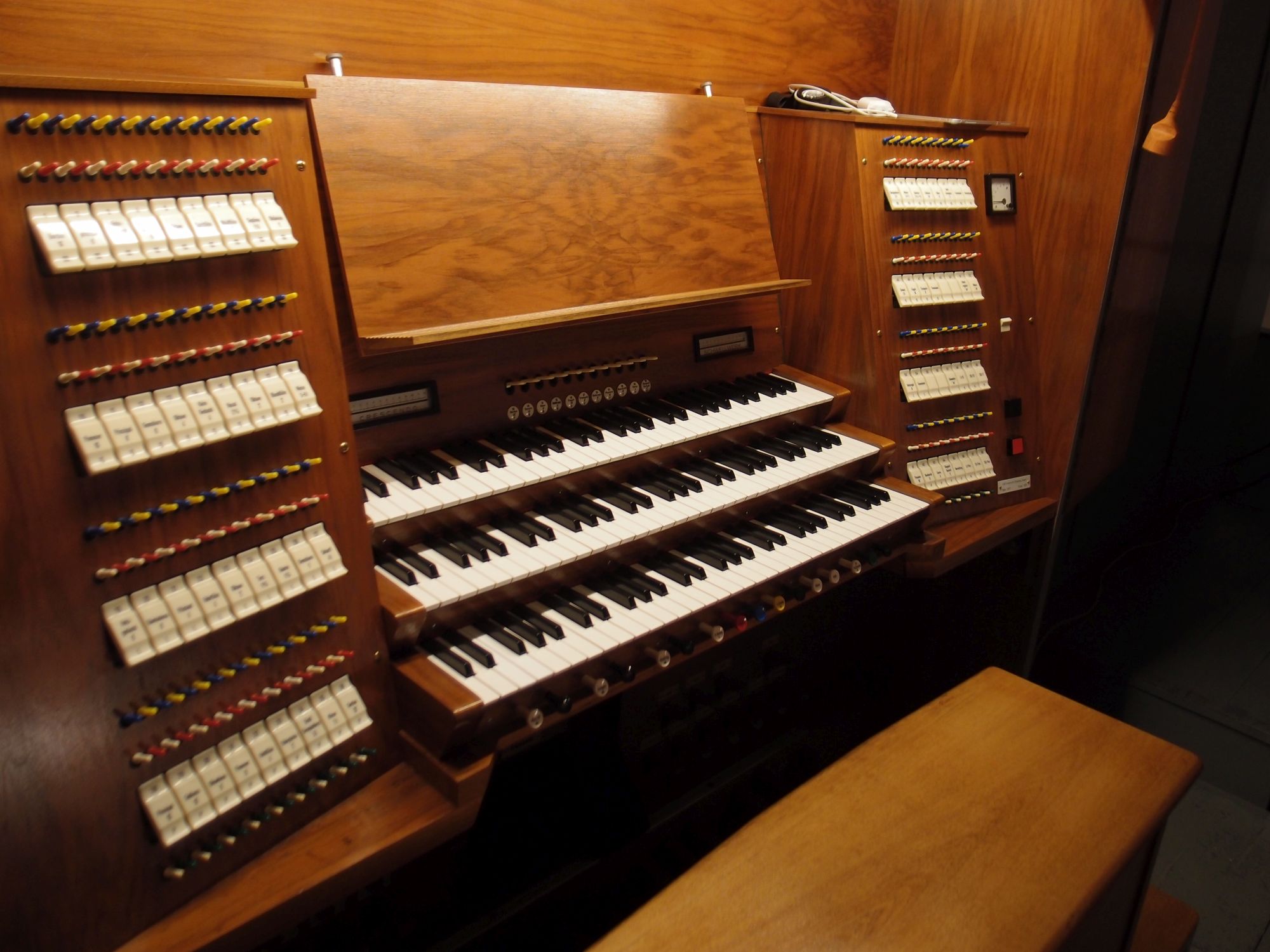Frankfurt (Oder), Konzerthalle Carl Philipp Emanuel Bach
| Builder | W. Sauer |
|---|---|
| Year | 1975 |
| Period/Style | Neo-Baroque |
| Stops | 53 |
| Keyboards | 3+P |
| Keyaction | electrical |
| Tuning | Equal at 440 Hz |
| Sampleset |
Available
 , sampled by
Sonus Paradisi
, sampled by
Sonus Paradisi
|
The Carl Philipp Emmanuel Bach Concert Hall in Frankfurt (Oder) was originally a Franciscan monastery. The organ in the hall was built by Sauer in 1975 as Opus 2025. The Sauer company is world famous for top-quality Romantic instruments. But few people know that the organ building at the company continued throughout the 20th century, and even today the company builds and services pipe organs. In the second half of the 20th century, the company built neo-baroque instruments. as was the current fashion. The Opus 2025 is an excellent representative of this movement. Unlike many instruments of the period, which often have lackluster voicing and a sound that borders on boring, this instrument stands out with its meticulous voicing, especially in the labial stops.
The organ's layout is typical of its time, based strictly on the "Werkprinzip" hierarchy. Not to be overlooked are the strange aliquots, including septimes and nones, the high-pitched mixtures, and the characteristic dominant flute sound of the foundation stops. The reed registers are rather narrow in sound, always needing to be paired (covered) by a labial stop. Also very successful is the Holzprincipal in the swell, which is essentially a "secret" Flute Harmonique. Thanks to the Sauer tradition of voicing and the craftmanship of this organ, it transcends the narrow confines of the neo-baroque sound ideal.
The organ was overhauled in 2019/20, and a new mobile console has been added to allow the organ to be easily used together with the orchestra. Fortunately, the voicing of the organ was not altered during this restoration, so we can still hear the mastery of Sauer's voicers today.
The organ's layout is typical of its time, based strictly on the "Werkprinzip" hierarchy. Not to be overlooked are the strange aliquots, including septimes and nones, the high-pitched mixtures, and the characteristic dominant flute sound of the foundation stops. The reed registers are rather narrow in sound, always needing to be paired (covered) by a labial stop. Also very successful is the Holzprincipal in the swell, which is essentially a "secret" Flute Harmonique. Thanks to the Sauer tradition of voicing and the craftmanship of this organ, it transcends the narrow confines of the neo-baroque sound ideal.
The organ was overhauled in 2019/20, and a new mobile console has been added to allow the organ to be easily used together with the orchestra. Fortunately, the voicing of the organ was not altered during this restoration, so we can still hear the mastery of Sauer's voicers today.
| Rückpositiv | Hauptwerk | Swell | Pedal |
|---|---|---|---|
| Holzgedackt 8' | Pommer 16' | Bordun 16' | Untersatz 32' |
| Quintadena 8' | Prinzipal 8' | Holzprinzipal 8' | Prinzipal 16' |
| Praestant 4' | Gemshorn 8' | Rohrgedackt 8' | Subbass 16' |
| Rohrflöte 4' | Oktave 4' | Salizional 8' | Oktavbass 8' |
| Oktave 2' | Kleingedackt 4' | Oktave 4' | Pommer 8' |
| Terz 1 3/5' | Nasat 2 2/3' | Spitzflöte 4' | Hohlflöte 4' |
| Quinte 1 1/3' | Oktave 2' | Waldflöte 2' | Rohrpfeife 2' |
| Gemshorn 1' | Blockflöte 2' | Septime 1 1/7' | Gr. Sesquialtera III |
| Scharff IV | Mixtur V-VI | Oktävlein 1' | Mixtur VII |
| Holzregal 8' | Zimbel III | Sesquialtera II | Sordun 32' |
| Fagott 16' | Quintan 1 1/3'+8/9' | Posaune 16' | |
| Trompete 8' | Mixtur V-VII | Bombarde 8' | |
| Dulzian 16' | Corno 4' | ||
| Oboe 8' | Singend Kornett 2' | ||
| Helltrompete 4' | Kornettzug | ||
| Kornettzug |
1668855173-Duboi FF
0:00
0:00
1668120676-bwv 525 1
0:00
0:00
https://www.sonusparadisi.cz/en/organs/germany/frankfurt-oder-sauer-op-2025.html
 Pipe Organ Map
Pipe Organ Map


